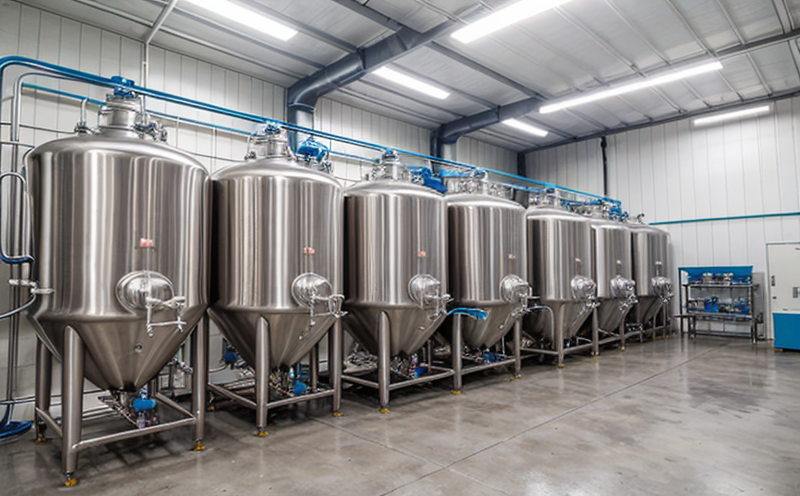EP 2.6.12 Microbiological Examination of Fermentation Products
The European Pharmacopoeia (EP) 2.6.12 specifies a stringent procedure for the microbiological examination of fermentation products. This service is critical in ensuring that biotechnological and pharmaceutical industries comply with regulatory standards, thereby protecting public health and ensuring product safety.
Microbial contamination can have serious consequences, including reduced efficacy or even toxicity of medicinal products. The EP 2.6.12 protocol aims to prevent such risks by meticulously examining fermentation products for the presence of microorganisms that may compromise their quality and stability.
This examination is conducted using advanced microbiological techniques, which are designed to detect even trace amounts of microbial contaminants. The process involves several key steps: sample collection, preparation, inoculation into appropriate media, incubation under controlled conditions, and final identification and quantification of any detected microorganisms.
For accurate results, it is essential that the samples are collected in a manner that minimizes contamination. This may involve sterile sampling techniques, ensuring that all equipment used is free from microbial contaminants. Once the sample is prepared, it undergoes inoculation into selective media, which allows for the growth and differentiation of specific types of microorganisms.
The incubation period can vary based on the type of fermentation product being examined, but typically ranges from 5 to 7 days at appropriate temperature conditions (e.g., 20-25°C). Following this period, any colonies that have formed are carefully counted and identified using biochemical tests or molecular techniques. This identification process is crucial for determining whether the detected microorganisms pose a risk.
The EP 2.6.12 protocol also includes methods for quantifying the number of colony-forming units (CFUs) per gram or milliliter, which provides valuable information about the extent of microbial contamination. This quantitative data is essential for understanding the nature and severity of any potential issues and for implementing appropriate corrective actions.
By adhering to this rigorous protocol, laboratories can ensure that fermentation products meet the highest standards of quality and safety. This not only enhances product reliability but also fosters trust among consumers and regulatory bodies.
The EP 2.6.12 procedure is widely recognized in the pharmaceutical industry for its comprehensive approach to microbiological examination. It complements other testing methods, such as sterility testing (EP 2.6.1) and identification of microorganisms using molecular techniques like PCR (Polymerase Chain Reaction).
Understanding the intricacies of EP 2.6.12 is crucial for quality managers, compliance officers, R&D engineers, and procurement personnel who are responsible for ensuring that biotechnological processes meet regulatory requirements.
Why It Matters
The microbiological examination of fermentation products as per EP 2.6.12 is essential because it ensures the safety and efficacy of pharmaceuticals derived from these processes. Microbial contamination can lead to product spoilage, reduced shelf life, or even health risks for patients.
- Public Health Protection: Ensures that medicinal products are safe for consumption by eliminating potential pathogens.
- Product Quality: Maintains the integrity and efficacy of fermentation-based pharmaceuticals.
- Regulatory Compliance: Helps companies meet stringent regulatory requirements, thereby avoiding fines and legal penalties.
The importance of this service cannot be overstated. It plays a pivotal role in safeguarding public health by preventing the release of contaminated products into the market. This not only protects consumers but also enhances the reputation of pharmaceutical manufacturers and biotechnological companies.
Environmental and Sustainability Contributions
The EP 2.6.12 protocol supports sustainability in several ways, particularly by promoting efficient resource use and minimizing waste generation. By ensuring that fermentation products are free from microbial contamination, this service helps to reduce the need for reprocessing or disposal of potentially contaminated batches.
- Resource Efficiency: Reduces the amount of raw materials wasted due to contamination.
- Energy Savings: Prevents unnecessary energy consumption associated with reprocessing.
- Reduced Waste: Minimizes the volume of contaminated products that need disposal, thereby lowering environmental impact.
In addition, adherence to this protocol ensures that fermentation processes operate at optimal efficiency, which can lead to lower operational costs and improved resource utilization. This aligns with broader sustainability goals by promoting responsible use of resources and reducing overall waste generation in the pharmaceutical industry.
Competitive Advantage and Market Impact
Adherence to EP 2.6.12 can provide significant competitive advantages for companies involved in industrial fermentation and biotechnology. By demonstrating a commitment to quality and safety, these organizations can build strong brand reputations and gain consumer trust.
- Enhanced Brand Reputation: Consistent compliance with regulatory standards enhances the reputation of the company.
- Consumer Trust: Ensures that consumers have confidence in the quality and safety of products derived from these processes.
- Innovation Support: Encourages continuous improvement in biotechnological processes, fostering innovation.
The ability to consistently meet regulatory requirements not only enhances market credibility but also opens up new opportunities for collaboration with other industry leaders. This can lead to increased market share and greater operational efficiency, ultimately contributing to long-term success in the competitive pharmaceutical landscape.





